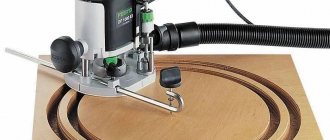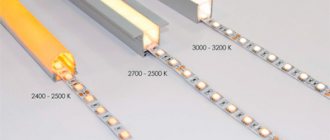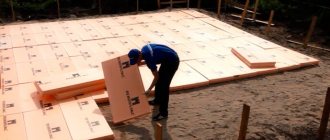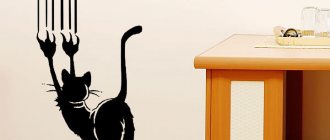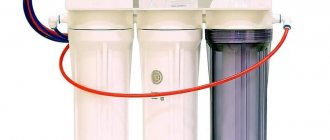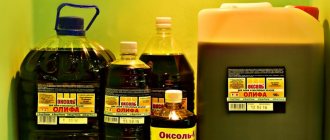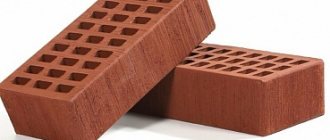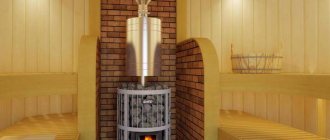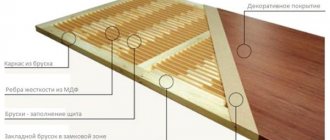A bathhouse is not just a place to relax, but a way to improve your health and well-being. If you choose the right stones for a bath, the beneficial vapors emanating from the hot stones will help cope with diseases and speed up recovery.
But buying to save money increases the risk that the stones will contain radioactive elements and other harmful particles that are life-threatening.
We will talk about all aspects of choosing the appropriate material for a sauna stove and sauna decoration in this article.
Finishing stones
These include breeds that look beautiful, but have poor resistance to temperature changes.
The main function of finishing stones is decorative. They decorate the walls or the outside of the heater. This design will not be cheap, but will last a long time.
Let's look at the most commonly used minerals for cladding.
Amphibolite
Location in our country is Nigrozero. The extraction method is open. The sawing technology is diamond-wire, performed seasonally on the mountainside: this way the blocks are almost the same size and of high quality.
Garnet amphibolite received several names - “Tundra”, “Nordic Sunset”.
The mineral consists of the following components:
- pomegranate – 15%;
- quartz – up to 20%;
- amphibole – up to 35%;
- aegirine – 2%;
- plagioclase – up to 28%.
It has a polychrome color, where black stripes alternate with white splashes and white stripes alternate with black splashes.
Amphibolite is a beautiful stone, therefore it is widely used for cladding:
- fireplaces;
- ovens;
- stairs;
- house facades;
- parapets;
- steps.
This is an excellent raw material for durable tabletops and sculptures.
Among the advantages:
- salt resistance – up to 0.28%;
- water absorption – 0.09%;
- the level of compressive strength reaches 144.4 MPa;
- resistance to low temperatures and wear.
The downside of amphibolite is that it cannot withstand high temperatures and begins to crack.
Marble
Marble finish adds elegance and is suitable for different types of cladding.
The material is durable. Its strength is due to its high quartz content.
Marble is expensive, so not every owner will be able to afford such luxury in the design of a bathhouse.
Jade
The most popular semi-precious mineral. Suitable for finishing work. Found application as a filler for sauna stoves.
Jadeite has a pronounced healing effect:
- Normalizes blood pressure.
- Helps restore the musculoskeletal system.
- Positively affects the functioning of the nervous system and heart.
- Good for the respiratory system.
Its advantages:
- Low thermal conductivity.
- Uniform compression, expansion with temperature changes. Doesn't crack.
- High density.
- Contacting water, saturates it with metasilicon acid.
- When heated, it saturates the air in the steam room with particles of zinc, argentum, and cuprum.
To fill the furnace, you need to take a large polished stone or one that does not need to be embanked - it will last many times longer.
It is allowed to take small crushed or large jadeite as finishing raw materials. The size is selected individually.
Nephritis
Refers to pyroxenes. Semi-precious mineral.
Depending on the mixtures in its composition, the color of the stone can be:
- Emerald or bright green (rich with chrome).
- Dark brown or black (iron predominates).
- Pink (contains magnesium).
Long ago in the East, jade was called a stone of health because of its healing properties and the ability to speed up the treatment of many diseases.
It is used in baths for decorative purposes, to decorate the walls of rooms. Durable, can retain heat for a long time.
When purchasing it, you should be careful, because often, instead of expensive natural jade, sellers offer inexperienced customers a fake - a cheap coil - for the same money. It is similar in color, but has low strength and cannot withstand temperature changes or constant humidity.
When quantity is important
The role of stones in a steam room largely depends on its type and model of heater. For small electric heaters weighing 10-20 kg, stones are needed not for steam generation, but to protect heating elements from overheating and people from hard infrared radiation from metal. With such a volume, even heat-intensive stones will only smooth out temperature fluctuations, but will not be able to accumulate much heat.
As the volume of the heater increases, careful selection of stones plays an increasingly important role. The general rule is: the more stones in the stove, the longer they will maintain the temperature in the steam room and the more high-quality steam you can get from them. Moreover, by changing the type of stones, you can significantly change the characteristics of the heater itself. For example, for a 200kg stove, jade can provide additional hours of steaming after the fire goes out compared to quartz.
Therefore, try to choose a larger stove and always completely fill the entire volume of the heater with stones. Of course, if you like a Russian bath, and not a Finnish dry-heat sauna.
Selecting breeds from an environmental safety point of view
Minerals of uniform color are considered safe for health:
- dunites;
- jadeites;
- peridotites.
Cast iron and ceramics are not dangerous.
You should not use stones containing:
- sulfides;
- creosote;
- inclusions of rich red and yellow shades;
- with a metallic sheen.
You cannot collect granite, crushed stone, or paving stones for a bathhouse near highways or railroad tracks.
It is better to buy stones for backfilling in a store and demand quality certificates from sellers, which will indicate that the product has passed radio control.
An excellent option for finishing the walls of a steam room is salt stones. Beneficial vapors will protect against possible allergens.
Rating
Don’t be shy, vote, your opinion will add objectivity to such an important issue for every vaper.
If you want to find out who is currently claiming the title of “the best stone for a bath,” select your option - the results will then open automatically.
*** We wish you to find the most useful stone or mix that gives the perfect steam for you and your guests. For more materials on stones, see the section page.
And when the best breed or mixture has been chosen, it’s time to read about placing it in a stove or electric heater.
Laying features
The stones are selected in size depending on the type of stove:
- For open-fire wood stoves and Finnish saunas, stones from 8 to 18 cm are used. The larger the size of the mineral, the longer it retains heat.
- In closed heaters, the main requirement is a size of up to 23 cm.
- To fire electric furnaces, you need to take minerals measuring 4–7 cm. The recommended diameter of cast iron balls is 80 mm.
- To properly fill a cast iron pot, it is important to select a filler that is smaller in size than the door.
To ensure good, thick steam in the bathhouse, stones are selected and placed as follows:
- Inspect each element for cracks, sharp corners or chips.
- Suitable stones are washed with water and dried. This is an important point, otherwise, instead of clean steam, the owners will receive steam with dust impurities.
- The bottom is laid out with large cobblestones, which heat up quickly and retain heat for a long time. Soapstone, basalt, cast iron balls, gabbro-diabase are suitable. A budget option is river pebbles.
- Next come medium and small valuable species with medicinal properties. Often they combine crimson with white quartzite and jadeite.
- Oblong specimens should be placed vertically so that they heat up faster.
- All elements are placed tightly to each other, but the gaps for air circulation should remain less than 15% of the volume of the stones.
- When placing filler in an electric heater, you do not need to place the stones close to the pipes or other parts, but always 5–8 cm above the heating elements. Otherwise, the heated minerals will begin to expand and may cause the breakdown of one of the elements.
- 1-2 times a year it is recommended to inspect the filling, remove damaged, broken minerals, fill the oven with new ones, wash and dry the stones.
- Some rocks emit a characteristic cracking sound when first heated. If after several heatings the sound does not disappear, then you should get rid of such cobblestones, since there is a high probability of harmful impurities in the composition.
Only hot water can be poured onto hot stones in small portions. Do not pour oils, honey or other solutions to improve the aroma. The flame will increase, and the stones will begin to smoke and create unpleasant smoke.
It is much safer to dissolve essential oils in water and place the container over the stove.
What to choose?
Yes, we've finally reached this point. Here we can give you two good directions to think about.
Universal option
Jadeite or jade, they are suitable for any stove. Jadeite is a little better, but a little less durable. These minerals can be safely recommended to everyone. If you don’t want to worry about it, but just go and buy, then this is your option.
If you are not satisfied with the price, then pay attention to soapstone. It performs well, is safe, and is durable enough that you won't regret the purchase. Even experienced bath attendants respect this stone.
According to the furnace design
So, for example, if stones come into contact with the metal structure of the stove or open fire (continuously or occasionally), i.e. are exposed to high temperatures, then you should choose the most heat-resistant stones :
Chromite
Vulcanite
Soapstone chlorite
If the stones are not subjected to extreme loads, then the classic options are your choice:
jadeite and jade
gabbro-diabase
It’s probably worth making an important caveat here. After all, to tell the truth, any of the previously listed stones are absolutely suitable for use. If a stone is on this list, then it already deserves to be in your oven. And the disadvantages that we are finding fault with here are not that significant.
What stones are not suitable for steam rooms, decoration
The key factor when choosing is appearance. The surface must be uniform, without colored inclusions, mica, or impurities of other rocks.
It is forbidden to mine rocks for a sauna heater near industrial facilities, railway tracks, or highways. Rocks that remain in such places for a long time become saturated with creosote, a toxic substance whose vapors lead to poisoning.
Acidic, sedimentary rocks with a high silica content are not suitable for steam rooms.
Some minerals are used in the decoration of bathhouses, but are absolutely not suitable for filling the heater due to the fact that they begin to crack under the influence of high temperatures (amphibolite).
And, for example, beautiful rhodonite (shown in the photo) is not at all suitable for use in a bathhouse, since it deteriorates when it comes into contact with water.
Video description
Here is an interesting video on how to wash stones for a bath:
In order for the steam room to function normally, it is necessary to correctly calculate the mass of the stones. It is believed that there should be 5-6 kg of rock per square meter. Then the desired effect and maximum durability of the heater will be achieved.
Different types of stone differ in their service life
For stoves with a closed heater, a type that is more resistant to high temperatures is needed. In open stoves, the heating is less intense, so deciding which stones are better for the heater in the bathhouse is much easier.
Comparative characteristics of stones
Based on the performance characteristics, a rating of a number of minerals has been compiled according to several parameters.
By service life
| Place in the ranking | Duration of operation |
| 1 | Nephritis |
| 2 | Dunit, cast iron cores |
| 3 | Chromite, porphyrite, ceramic balls |
| 4 | Raspberry quartzite |
| 5 | Jade |
| 6 | Soapstone chlorite |
| 7 | White quartz |
| 8 | Jasper, gabbro-diabase |
It is important to remember that contact of minerals with open fire, improper placement inside the furnace, or extreme heat leads to a significant reduction in service life and premature damage.
By heat capacity, strength and density
Comparative characteristics of the main indicators of the physical and mechanical properties of minerals used in heater stoves of Finnish saunas and Russian baths.
| Indicators | Jade | Basalt | Gabbro-diabase | Raspberry quartzite | Soap chloride | Porphyrite |
| Compressive strength kg/sq.cm | 20 | over 30 | 15 | 25 | 8 | 15 |
| Mohs hardness | 7 | 8 | 5-6 | 7 | 2-3 | 6 |
| Strength coefficient on a 20-point scale according to Protodyakonov | 20 | 20 | 15 | 20 | 8 | 15 |
| Specific heat capacity kJ/kg*C | 0,88 | 1,1 | 0,7 | 0,95 | 0,98 | 0,85 |
| Thermal conductivity coefficient, kcal m*h*C | 2,3-3,6 | 1,8-3,5 | 1,59-2,98 | 3,7-7,6 | 3,5-4,7 | 1,17-3,37 |
| Coefficient of linear thermal expansion 10³*1/С | 0,35-0,46 | 0,6 | 0,7 | 0,15 | 0,2 | 0,8 |
| Rock density 10³ kg/m3 | 3,2 | 2,9-3,25 | 2,9-3,0 | 2,6-2,8 | 2,8-3,0 | 2,6-2,9 |
| Porosity | 0,01-0,03 | 0,02 | 0,2 | 0,1 | 0,3 | 0,15 |
| Melting temperature | 1040-1060 | 1450 | 1250 | 1700 | 1600 | 1300 |
| Acidity module | 28 | 2,2 | 3,4 | 16 | 1 | 3,5 |
| Class of building materials | 1 | 1 | 1 | 1 | 1 | 1 |
| Heat resistance (heating-cooling cycles) | 400 | more than 1000 | 300 | 100 | 500 | 400 |
| Flaws | SiO2 content more than 50% | No | Sulfur content | Crumbles, SiO2 content is more than 50% | Content of sulfur, talc, flake flaking | Dirty gray color |
It is not recommended to use minerals containing more than 50% SiO2 in baths and saunas.
Before filling the kiln, it is recommended to always check the heat resistance of the stones. To do this, they are heated 2-3 times and lowered into a container with cold water. Elements that have cracked are removed.
Briefly about the main thing
The main properties of stone for a bath are heat resistance, the ability to store heat and not absorb moisture, density and uniformity of structure.
- Jadeite is an expensive and rare stone that has a healing effect on the human body.
- Soapstone is a northern stone often used for saunas.
- Crimson quartzite is a beautiful brown stone that is resistant to high temperatures and produces high-quality steam.
To lay the heater, you can use gabbro-diabase, white quartz, sea pebbles, and basalt.
You can find some types of bath stones yourself. But you shouldn't do this on a railway embankment.
You need to place stones in the heater, placing them on the bottom. At the bottom there should be the most massive specimens and the most heat-resistant rocks.
It’s not enough to know how to choose stones for a bath; you also need to carefully care for them. Be sure to wash them and periodically replace damaged ones.
Ratings 0
Rules for caring for stones
It is important to carry out regular cleaning and inspection.
The need to replace the stove filler may be indicated by the appearance of an unpleasant odor, minimal heat transfer, or poor steam formation.
In regularly used saunas, minerals are inspected every month.
Care instructions:
- Clean off dirt with a metal brush.
- Rinse in a container with clean water without using soap solution or powder.
- A clean stone should be left in water for up to 1.5 hours until it becomes slippery.
- It is recommended to dry the minerals in a well-ventilated area, otherwise fungus will begin to form on the surface.
- Each element should be lightly tapped with a hammer. A loud sound indicates durability and serviceability, a dull sound indicates the need for replacement.
- Cracked specimens must be removed, filling the oven with new ones.
- Oil stains are practically impossible to remove, so the stones are placed with the clean side up.
For a pleasant aroma inside the steam room, you can hang bouquets of lavender and mint on the walls, fill a container with water and essential oil and hang it over the stove.
Top 5 stones for sauna stove
After analyzing the technical characteristics and healing properties of various minerals, we can come to the conclusion that the best choice for a bath would be:
- Jade. Suitable for cladding the walls of a steam room and as a filler for a stove. Durable, with high heat capacity and long service life. It has a good effect on health and helps cope with many diseases.
- Porphyrite and ceramic balls. They have the same thermal conductivity and heat capacity. They have a positive effect on the immune, nervous, and cardiovascular systems. Eco-friendly. Placed on the top layers of the oven.
- Dolerite. Good for backfilling. Keeps warm for a long time. Lasting. Steam has antibacterial properties.
- Soapstone chlorite. A very valuable type of mineral. Able to keep warm for a day. Helps with many diseases. But its service life is limited, so the material is laid on top and requires frequent inspection.
- Basalt. Requires careful inspection before installation for foreign inclusions. Inexpensive, environmentally friendly. Stacked down. It is better to fill the top with more valuable rocks.
Basalt
The stone is formed from solidified lava of a volcano. It has a dense structure and retains heat perfectly. Basalt is the most durable of all bath stones of volcanic origin; it can withstand strong temperature changes. It heats up quickly, gives off heat for a long time and produces steam well.
Bath basalt has high antibacterial properties, it disinfects the skin, improves the functioning of the respiratory system, helps cure colds and relieves migraines.
Despite its high performance properties, basalt has a fairly low cost.


